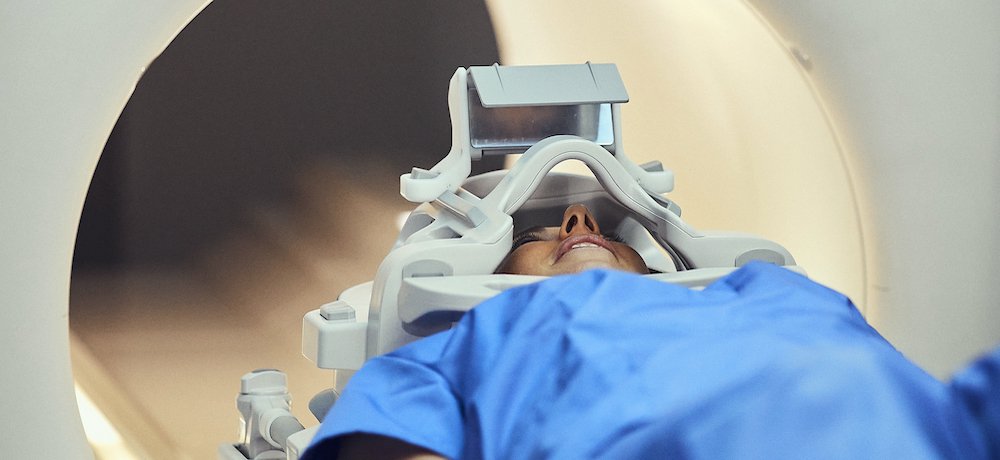Mark Hitchman, managing director of Canon Medical Systems UK explains why innovations in Artificial Intelligence for healthcare will deliver time efficiencies and better standards of care for patients.
Strokes occur once every five minutes in the UK and are the fourth single leading cause of death. Great results have been achieved in bringing these figures down over the years due to expanding research, medical innovations, and awareness campaigns, but the saying ‘time is brain’ is still incredibly important.
The quicker clinicians can identify and treat a patient with stroke, the better the outcome from death or long-term neurological damage. Swift diagnosis of stroke also has numerous health economic and management benefits for the entire stroke healthcare continuum, including shortened hospital stays and lower levels of rehabilitation such as physio, occupational, speech and language therapy.
Artificial Intelligence powering efficiencies inside the hospital
Artificial Intelligence (AI) in diagnostic imaging is about solving many of the problems in the modern healthcare environment. This includes providing the tools to help clinicians make confident decisions faster when faced with growing patient lists and backlogs. It can help to simplify workflows that can optimise staffing and equipment resource deployment, plus help reduce the daily stress and pressure on health professionals. Replacing radiologists or other clinicians with AI is not the motivator, the human element is needed more than ever, but AI can provide an effective decision support tool to help triage reporting cases and speed up decision making.
This has begun with Deep Learning reconstruction AI algorithms built into the frontline medical imaging systems such as AI-assisted CT or MRI scanners. This innovation helps to differentiate ‘noise’ from true signal, reducing distortions, preserving edges, and maintaining details in image outputs at the same time as achieving lower doses than ever before in routine CT imaging. This gives super clear images for radiologists to report on and lowers the number of repeat scans needed to improve image quality – another tick in the time-saving box. The low dose is also much healthier for patients, many of whom will have multiple scans over the course of their lives adding to their cumulative dose, given that CT is now a ‘routine’ diagnostic pathway.
AI-assisted imaging is now being used by dozens of hospitals across the UK bringing benefits to patients. Mid Cheshire Hospitals NHS Foundation Trust was a pioneer in this area, its Consultant Radiologist commented, “Advanced Deep Learning Reconstruction of clinical images heralds a new era in CT. It enables phenomenal patient dose reduction, up to 90% below the National Diagnostic Reference Levels, at the same time as providing extremely high-quality clinical images and all in a rapid timeframe suitable for everyday clinical use. The images generated are much more natural and acceptable in appearance to radiologists reporting on cases. Previously, the images looked as if they had been painted with watercolours. This is a great improvement – once you see them, you’ll never look back. As a department we have always been very proactive when it comes to keeping patient dose down and our experiences of using the system every day for in inpatients and outpatients has exceeded our expectations. It is a game changer for radiology.”
But AI can go much further. Automated AI applications for imaging that drill into specific disease conditions are now rolling out.
Prioritising patient cases with AI-assisted stroke diagnosis
For example, AI can now analyse and categorise diagnostic brain images automatically following a CT scan, with zero user clicks, to detect signs of ischemic and haemorrhagic stroke faster than manual reporting. This can help a radiological team prioritise urgent patient cases, refocus valuable human resources and speed up diagnostic reporting. This, in turn, has the potential to reduce the time taken to make a clinical decision on incoming query stroke cases and administer life-saving treatment faster. Streamlining stroke-related workflow by automatically consolidating results into a single summary and flagging up abnormalities for a clinician to view is exciting. It will save time and empower clinicians.
AI is much talked about today. But it can be perceived as complicated, confusing, and time-consuming to learn how to use. By layering and automating it into mainstream medical technology that clinicians already use daily, will help remove these barriers to acceptance. This will amplify and simplify its important roll out into mainstream healthcare.
link

